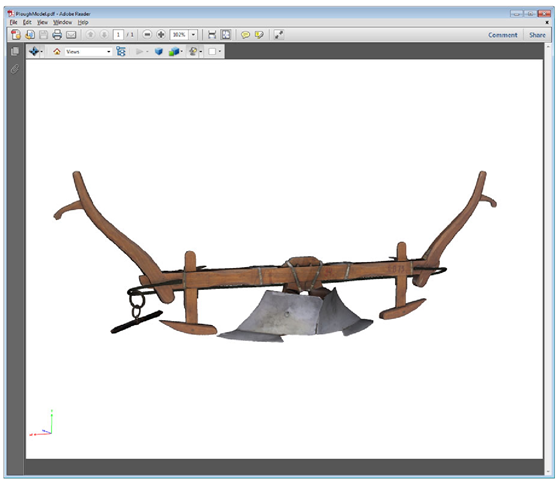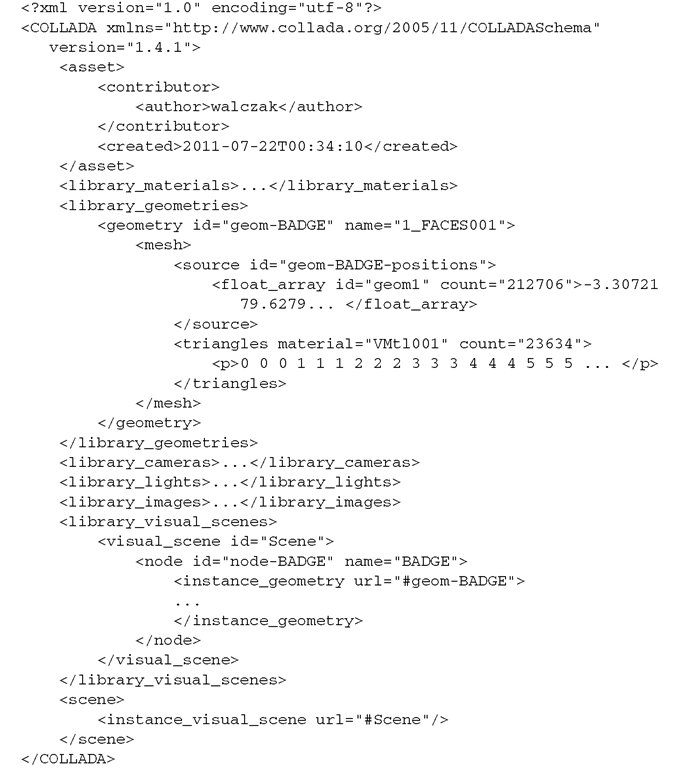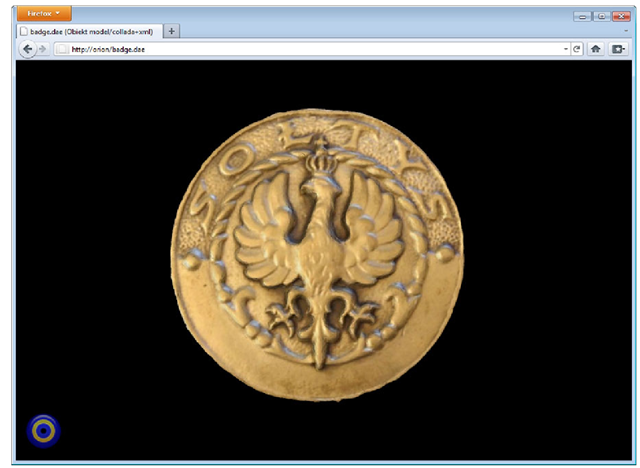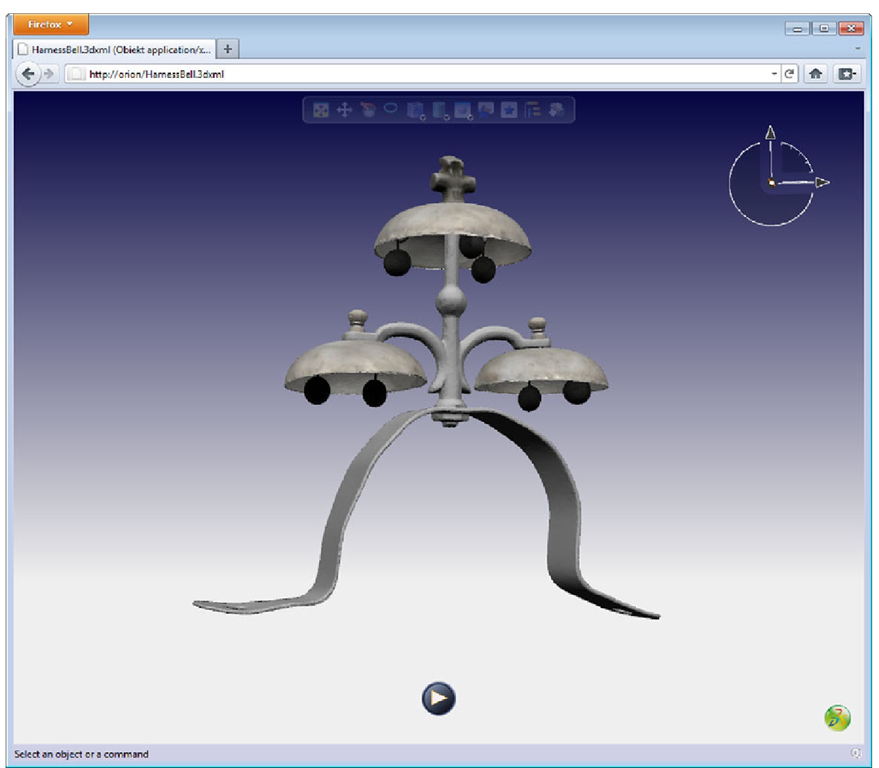COLLADA
COLLADA (Collaborative Design Activity) is an intermediate format designed for content interchange between 3D authoring applications. The work on COLLADA has been started in 2003 by Sony Computer Entertainment supported by a growing group of other companies. In 2005, Khronos Group [54] accepted COLLADA as industry standard [13]. Similarly as X3D, COLLADA is a royalty-free open standard [6].
Fig. 2.6 U3D model embedded in a PDF document and displayed in Adobe Reader X
COLLADA targets mainly the game industry, focusing on exchanging content and assets between diverse authoring tools, including DCC (Digital Content Creation) tools and Conditioning tools, and for archiving rich content. COLLADA enables free exchange of asset data, and therefore enables combining multiple tools into an integrated and flexible authoring pipeline.
COLLADA specifies an open standard XML schema for describing content. COLLADA documents are XML files, usually with a *.dae (digital asset exchange) filename extension. A COLLADA XML file contains a root element <COLLADA>, which must contain an <asset> element and may contain a number of various library elements, a <scene> element, and a number of <extra> elements. An example of a COLLADA file is presented in List. 2.4.
Although COLLADA is not intended to be a content publishing format, there are browsers capable of displaying COLLADA content. An example COLLADA scene rendered in a Web browser equipped with the BS Contact plug-in is presented in Fig. 2.7 (3D model courtesy of [56]). COLLADA models can be converted into VRML and X3D formats [48].
List. 2.4 Example of a COLLADA file (shortened)
3D XML
3D XML is a proprietary XML-based 3D content representation format developed by Dassault Systèmes [17]. The 3D XML format is used in the whole suite of Dassault Systèmes’ tools including CATIA, DELMIA, ENOVIA, SIMULIA, SolidWorks, and Virtools. A free 3D XML player—3DVIA Player—is available both as a plug-in for Web browsers and as a standalone application [16].
Fig. 2.7 COLLADA scene displayed in a Web browser with BS Contact plug-in
A 3D XML package is made up of a collection of separate files containing data such as product structure, geometric representations, images, materials, and industry-specific data. All files within an archive are compressed using ZIP compression. A special Manifest.xml file identifies the starting point in the archive. The structure of all 3D XML files is described using XML Schema [58], although the standard can also include binary representation of geometry.
3D XML format has been primarily developed to support PLM (Product Lifecycle Management) tools, and consequently it is limited to the description of 3D designs, without support for interaction and behavior.
An example of a 3D XML model of a museum artifact rendered in a Web browser equipped with the 3DVIA plug-in is presented in Fig. 2.8 (3D model courtesy of [56]).
Comparison of 3D Content Standards
In previous sections, popular 3D content standards have been described. These standards have been designed for different purposes and—consequently—have different abilities. Some of them are meant as mainly content exchange formats, while others are more suitable for publishing. These standards also differ in their capabilities to handle different types of media content such as sounds, movies, and graphics. In Table 2.3, main characteristics of the described 3D content standards are summarized.
Fig. 2.8 3D XML model displayed in a Web browser with the 3DVIA plug-in
Table 2.3 Characteristics of 3D content standards
|
Standard |
Main purpose |
Animation |
Interaction |
Media |
|
VRML |
Publishing |
Yes |
Yes |
Images, Sounds, Movies, Texts |
|
X3D |
Publishing |
Yes |
Yes |
Images, Sounds, Movies, Texts |
|
MPEG-4 |
Publishing |
Yes |
Yes |
Images, Sounds, Movies, Texts |
|
U3D |
Publishing |
Yes |
External |
Images |
|
COLLADA |
Exchange |
Yes |
No |
Images |
|
3D XML |
Exchange Publishing |
No |
No |
Images |




